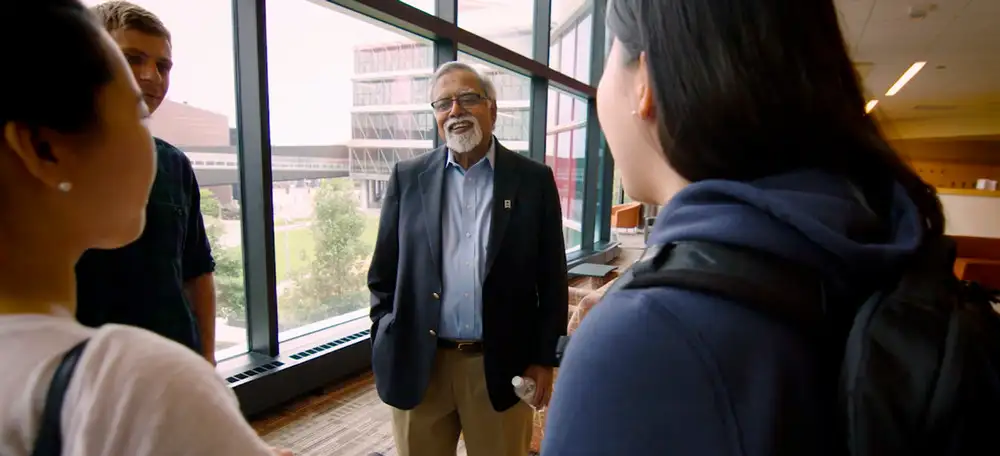Equity 2030 – A Minnesota Imperative

By Devinder Malhotrav, Chancellor, Minnesota State
March 17, 2021
“The progress of the world will call for the best that all of us have to give.” – Mary McLeod Bethune
Welcome to the Minnesota State Equity 2030 Blog. As chancellor, I’m excited to launch this platform that is designed to share what Minnesota State is collectively developing, advancing, and learning in the journey to reach our moonshot goal of Equity 2030. You can expect insightful commentary from a variety of Minnesota State leaders highlighting promising practices, changes, and other important equity-centered efforts underway across our colleges and universities and across our state as a whole.
Our goal is straightforward: to close the educational equity gaps across race and ethnicity, and socioeconomic status by the year 2030. However, achieving this goal is extraordinarily complex. Our colleges and universities have been working for years to improve access and to close the gaps. While strides have been made, the reality remains that our higher education institutions continue to underserve populations of certain students, including Black, Indigenous and students of color, students from low socioeconomic backgrounds, and other historically marginalized groups. Our colleges and universities are not alone in their challenges to close these persistent and insidious gaps. It’s a national problem, with Minnesota’s disparity gaps ranking among the worst in the country.
Recognizing we needed to change our approach, in 2019 the Board of Trustees adopted the Equity 2030 framework. Soon to follow, the 2020 crises of the global health pandemic, its resultant economic fallout, and a national reckoning on racial justice sparked by the death of George Floyd propelled a deep urgency and immediacy to our efforts. Equity 2030 emerged as the organizing principle for all our work, for all our operational structures, and for the inclusive and anti-racist organizational ethos we strive for. It is this collective, united effort that will help Minnesota State move the needle in closing the gaps.
As importantly, this collective effort must expand beyond our colleges and universities if we are to succeed. Putting our students – and Minnesota – on an inclusive trajectory cannot be accomplished by any single solution, nor can it be done alone in isolation at any college or university. Students face many challenges outside their academic pursuits. The conditions and factors that have created disparities are not easily siloed and solved. Jobs, housing, education, health, and food security are parts of a deeply interconnected system. Therefore, closing the educational equity gaps requires sustained partnerships across sectors, including with organizations, governmental entities, businesses, our K-12 partners, and local leaders.
Connecting students to resources to help them meet basic needs and other support services is intrinsic to Equity 2030 and ultimately to our students’ success. A Hope Center survey conducted before the pandemic in early 2020 found that among students surveyed at 28 Minnesota State colleges and universities, 60% of college students and 54% of university students responding had experienced some form of basic needs insecurity in the previous year. With the dire economic impact of COVID-19, these numbers have surely only gone up.
Our colleges and universities are going above and beyond in developing innovative ways to support our students, though operationally we have not been resourced to serve in these roles. We must draw on resources from beyond our institutional boundaries. While there are such partnerships already occurring across our 54 campuses and within communities, we need to continue to strengthen and cultivate these relationships.
Most students nowadays are not what many of us think of when we think of college students – namely, those straight from high school who are enrolled full-time with the financial support of their parents. Rather, students today are pursuing their education while juggling work, raising families, and often a combination of both. Equity 2030 changes the traditional higher education model that expects students to fit and adapt to its institutions. Instead, it is student-centered, preparing our colleges and universities for the students we educate and tailoring learning for each student’s strengths and needs. It provides the flexibility and support to help ensure students succeed through their entire academic journey – from enrollment to graduation and beyond.
There is no question that Equity 2030 is our moral imperative. It is the right thing to do. However, Equity 2030 is also Minnesota’s economic imperative. Long before COVID-19, closing the educational equity gaps was a critical component of building our state’s competitive and skilled workforce. We know tomorrow’s workforce is going to be diverse. And, we know tomorrow’s job opportunities will require a higher cognitive base of knowledge and postsecondary credentials. The path to economic recovery and long-term prosperity— for individuals, our communities, and our state — is through inclusive, equity-minded practices and policies.
I look forward to our challenging – and ultimately rewarding – work in the months and years ahead. Doing the hard work together, and partnering with non-profits, government agencies, employers, and the healthcare system will ensure we close the equity gap by 2030. I invite you to engage in Equity 2030 and share what you read and learn.